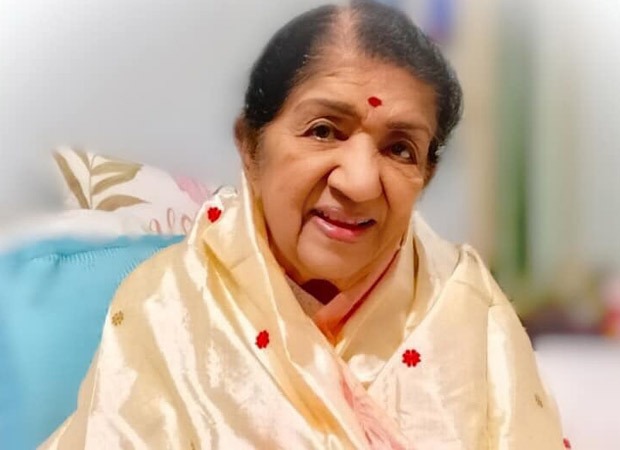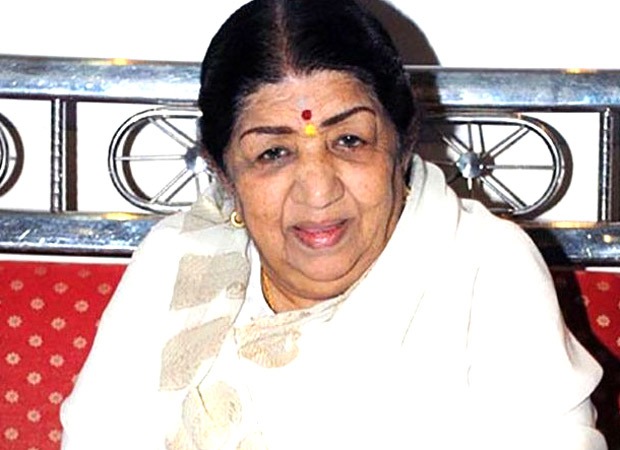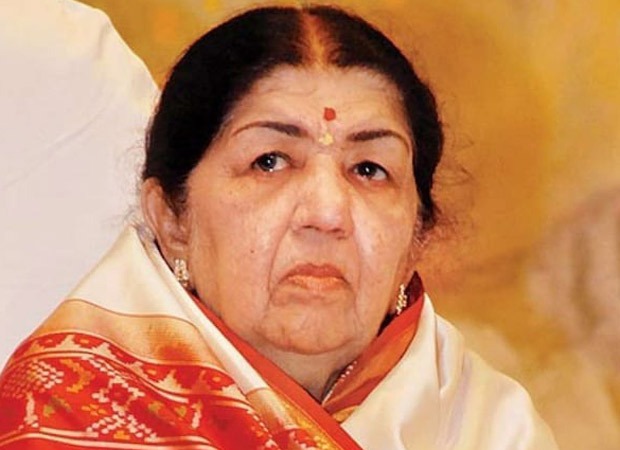Lata Mangeshkar through the Millennium: Remembering the legend through the years
In 2001, Lata Mangeshkar was awarded the Bharat Ratna, India's highest civilian honour, signifying without doubt, that she had no vocal equal among female voices in cinema, a full 54 years after she began her playback innings with Aap Ki Sewa Mein.

For an artiste born in 1929, who ruled the Hindi industry from the 1950s to the 1980s besides recording in multiple languages including mother-tongue Marathi and even English, Lata remains nothing less than an institution in and of music.
In the 1990s, she had reduced her work exponentially, as the young breed of singers led by Alka Yagnik and Kavita Krishnamurthi began to occupy center-stage. Lata became busier in shows and other activities, including social work, and yet, most composers still opted for her when their compositions implored her expertise.
By the millennium, Hindi film music, her chief bastion, had undergone a sea-change in structure as well as relevance and consumption. It was no longer necessarily about lyrical or musical aesthetics, about a situation specific to a story, about being a dear friend to its listener or even about an enduring relationship with us. It became functional, and as time passed, technical and even separate from a film’s narrative.
Also the reigning composers fell into one of two categories: those who were in awe of her as a singer, overwhelmed by her age and status, and therefore did not record with her, and those who craved to have at least creation of theirs embellished by her vocals, and chose to have that surreal experience of recording with her.
The first group, which had names like Himesh Reshammiya, Pritam, Vishal-Shekhar, Shankar-Ehsaan-Loy and Sajid-Wajid besides still younger names like Amit Trivedi, Sachin-Jigar and Amaal Mallik, remained “off-Lata”, while the rest, including Shamir Tandon, Rahul Sharma and Nikhil-Vinay (separately, as they had split), created melodies designed for the nonpareil singer.
Lata opened her 2000s score with A.R. Rahman’s ‘Ek Tu Hi Bharosa’ (Pukar), a double-whammy of sorts for fans as she also enacted it on screen—the last this had happened was in her teenage in the early 1940s, in films like the Marathi Gajabhau, in which she had enacted a Hindi song, and Badi Maa.

Rahman takes credit for the maximum number of original songs recorded with her in this phase. One Two Ka Four and Lagaan followed (the popular ‘O Paalanhaare’) and then Zubeidaa and Rang De Basanti (in which she sang ‘Luka Chhupi’ for Waheeda Rehman a full 25 years after Lamhe and so many earlier hits). To his credit, Rahman composed all these songs in a way that Lata’s voice sounded younger than it was.
The other composers who made a memorable use of her were Jatin-Lalit, who had already used her so brilliantly in a few films in the 1990s, notably in Dilwale Dulhania Le Jayenge. The prominent films were Mohabbatein (2000), in which she sang the hit with Udit, ‘Humko Hamin Se Chara Lo’ for Aishwarya Rai, the title-song for Kabhi Khushi Kabhie Gham… enacted by Jaya Bachchan (20 years after their last outing in Silsila!) and also in Dev Anand’s Censor.
A memorable if largely unsung song was Ilaiyaraaja’s ‘Kaun dagar’ from Rajkumar Santoshi’s Lajja (2001), the South composer’s only Hindi song with the Melody Queen, which also marked the film debut of the illustrious lyricist Prasoon Joshi. Lata had sung for the South maestro earlier in Tamil and Telugu.
Shamir Tandon, making his debut as composer, used Lata to great effect in the hit track, ‘Kitne Ajeeb Rishte Hai Yahaan Ke’ for Madhur Bhandarkar’s Page 3 in 2005. The song took us back to Lata’s golden era with their incisive words and haunting tenor, though Lata did have a hint of age in her vocal. He also used her voice in Jail (2009).
Rahul Sharma, son of Pt. Shivkumar Sharma, who had unleashed a hit parade of Lata numbers from Silsila to Chandni, Lamhe, Parampara and Darr in the earlier decades, created no less than three songs for her in Yash Chopra’s new film Mujhse Dosti Karoge (2002). ‘Jaane Kabse Dil Mein Hai Tu’ (in two parts, with her youngest co-singer Sonu Nigam), ‘Andekhi Anjaani Si’ (with Udit Narayan) and a medley of retro hits with Pamela Chopra, Udit and Sonu formed this melodious trio. Among major singers, Sonu became her youngest co-artiste.
Mujhse… was her last outing with Anand Bakshi, who has written more Lata numbers than anyone else, and the medley included compositions of Laxmikant-Pyarelal and Shankar-Jaikishan, with whom, cumulatively, Lata recorded about 20 percent of her film songs across languages!
And speaking of Yash Chopra, another of Lata’s whopping hits in this decade was Veer-Zaara (2004), in which unused tunes of one of Lata’s favourite composer, Madan Mohan, formed the music score. This was the last movie in which Lata recorded the number of songs she was best known to do in the 1950s and 1960s—nine, including solos, duets and ensembles. The “hit”-list was led by ‘Tere Liye Hum Bhi Jeeye’, her duet with Roopkumar Rathod. The album was said to be the year’s highest-selling film soundtrack!

A charming duet was ‘Saare Shaher Mein Charcha’ from Dil Ne Phir Yaad Kiya, which was composed by Aadesh Shrivastava, in which Lata sang for the first and only time for Pooja Batra. Lata also recorded for Adnan Sami’s solo debut as a composer with Salman Khan’s home production, Lucky—No Time For Love (2005). The duet with him was the placid ‘Ek Ajnabee Sa Ehsaas’.
Among the older composers, Nadeem-Shravan got her to sing for Kareena Kapoor Khan in Sridevi’s production Bewafaa in their typical style in ‘Kaise Piya Se Main Kahoon’.
Lata also sang almost all the songs for her brother Pt. Hridaynath Mangeshkar in his last Hindi film, Lal Salaam (2002), for Uttam Singh in Farz (2001), and for Vinay Tiwari in Strangers (2007) and Nikhil Kamath in Dunno Y…Na Jaane Kyon (2010).
But in these last 20 years, Lata had much more going for her than the songs she recorded. In 2001, the Bharat Ratna established the Master Deenanath Mangeshkar Hospital in Pune, managed by the Lata Mangeshkar Medical Foundation (founded by the family in 1989).
In 2005, she designed a jewellery collection called Swaranjali, crafted by Adora, an Indian diamond export company. Five pieces from the collection raised over 100,000 British pounds at a Christie’s auction, and part of this was donated for the 2005 Kashmir earthquake relief.
Saadgi was an album composed by Mayuresh Pai in 2007, and a duet with Mehdi Hasan, ‘Tera milna bahut accha’ in the 2011 album Sarhadein: Music Beyond Boundaries was also composed by Pai.
Not one to abandon the art that had given her so much (and vice-versa!), Lata also launched her own music label, LM Music, with an album (in which she also sang) of bhajans, Swami Samarth Maha Mantra, composed by Pai again. In 2014, she recorded Shurodhwani, a Bengali poetry album. In December 2018, she recorded the Gayatri Mantra on the occasion of the wedding of Isha Ambani and Anand Piramal.
And her swan song, literally, was Pai’s ‘Saugandh Mujhe Is Mitti Ki’, a tribute to the Indian army, which was recorded on March 30, 2019.
There will never be another Lata Mangeshkar. Her name meant a flowering plant, and the countless flowers she has presented as songs will bloom forever.
from Featured Movie News | Featured Bollywood News - Bollywood Hungama https://ift.tt/msoDcHG



No comments